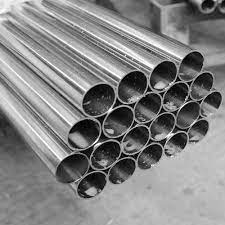
Replacing Copper Pipes with PEX
In recent times, PEX piping has emerged as the most popular alternative to copper pipes for residential plumbing. Homeowners are increasingly turning to PEX for many advantages it offers over traditional copper pipe. Cost, flexibility and installation convenience are some of the major benefits of PEX piping compared to copper.
Advantages of PEX Piping
PEX piping is made from a polymer-based material, meaning it is more flexible than copper pipe. This not only makes it easier to work with during installation, it can also reduce the number of fittings and elbows needed, which saves time and money. In addition, PEX can be installed in applications that require tight bends, allowing for more creative uses.
On the practical side, PEX pipe is cheaper than copper and does not require soldering, making it easier and less costly to install. It is also much resistant to freezing temperatures, reducing the risk of water damage in the home. Additionally, PEX can easily pass through walls or ceilings, making it a great alternative for use during renovations or remodeling. Its flexibility also minimizes the chances of leaking when placed near building movement, such as shifting foundation, vibration or seismic activity.
Cost of Replacing Copper Pipes with PEX
Replacing copper pipes with PEX is usually less expensive than installing all new copper piping, though the exact cost depends on the project. Even if copper piping is old, it may still be in good condition and may not need to be replaced. Some costs associated with replacing copper pipes with PEX include the cost of labor, the cost of materials such as PEX pipe and fittings, and any additional tools and supplies needed.
The cost of labor is less when using PEX compared to copper because PEX is quicker and easier to install than copper. For example, PEX can be installed with a plastic sheet and crimp fittings, while copper must be bonded using solder. In some cases, the materials cost for PEX is lower than for copper and other materials such as dielectric unions, running tee and couplings.
PEX Pipe Installation
One of the most important steps in PEX installation is to ensure the pipe is properly connected to the fittings, as improper connections can cause leakage and other problems. PEX connections are typically made with metal rings and special tools to secure them. In some cases, it is necessary to use a special adhesive to ensure a secure fitting. To make connections with metal fittings, a crimping tool may be needed. For plastic fittings, a metal or plastic clamp is used.
PEX also needs to be properly supported to keep it from sagging, splitting, warping or leaking. Proper spacing of hangers or straps can help ensure the pipe is properly supported and prevent accidental damage during and after installation. Proper insulation of the PEX outside of the home can help to reduce condensation build up and noise from the pipe.
Overall, replacing copper pipes with PEX piping can be an effective and cost-efficient solution for many homeowners. Its flexibility, affordability, and ease of installation make it an ideal choice for those looking for a more durable and robust plumbing solution. With proper installation and maintenance, PEX can be a long-lasting and cost-effective replacement for aging copper piping.



























